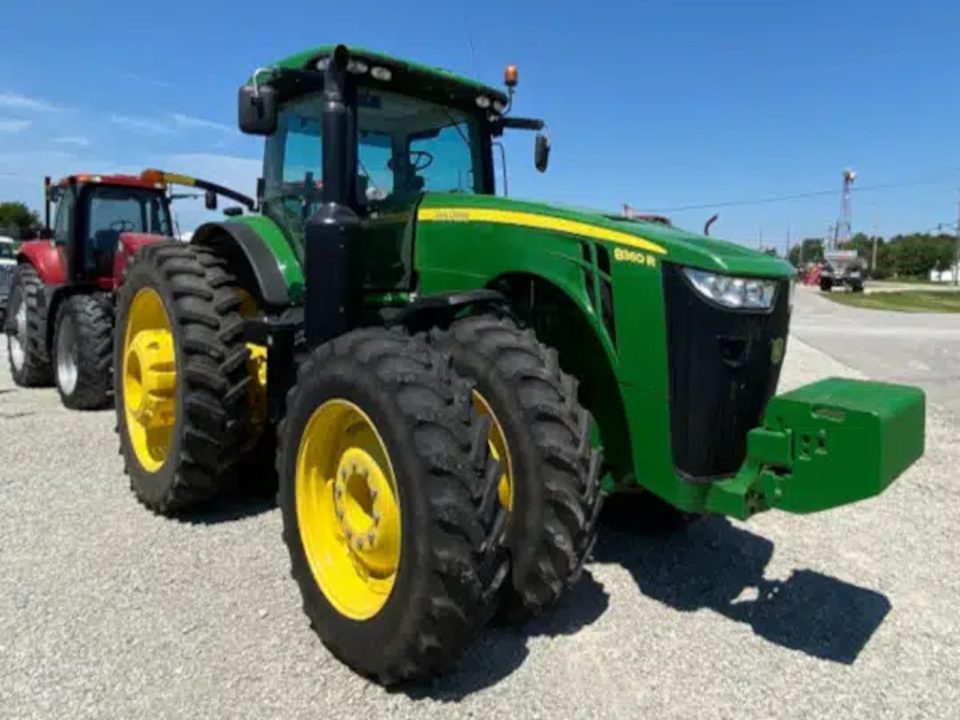When searching for a used tractor, rushing through or skipping checks risks expensive hidden problems. There are few key functions you should thoroughly examine when evaluating any used tractor.
Inspecting the engine
A used tractor’s engine deserves extensive examination as failures require very costly rebuilds or replacements. Assess both external and internal condition.
- Check all fluid levels – Confirm oil level registers on the safe operating range on the dipstick and oil looks clean not contaminated. Inspect if other fluid reservoirs like coolant, power steering, brake and transmission also reach proper marks and appear clean.
- Look for leaks – Scan around the engine bay and underside for any leaks originating from gaskets, seals, hoses, housing cracks etc. Leaks signal problems and lose precious fluids over time.
- Start it cold – Insist on starting the tractor after sitting overnight cold. Listen for smooth idle without odd noises. Blueish smoke out the exhaust on start-up hints at worn piston rings or valve issues.
Testing the hydraulic system
As essential tractor work center, scrutinize the hydraulic system closely for adequate pressures, sticking cylinders, and leaks.
- Check hydraulic reservoirs – With system lowered but not running, hydraulic reservoirs should reach “cold fill levels”. If low, contaminated fluid or leaks are likely causing the loss.
- Inspect hydraulic hoses – Scan all hydraulic hoses for cracking, chafing, corrosion and leaks. Replace suspect hoses proactively, especially inexpensive preventative maintenance.
Evaluating the chassis
While not as exciting, closely evaluating chassis, electrical and other components protect from future issues there as well.
- Examine tires/wheels – Look for cuts, missing lugs, leaks, irregular wear, or flat spots. Check if tire rims suffer from any deformation or cracks. Incorrect air pressure ruins new expensive tires fast.
- Test electronics – Confirm all lighting, monitors, gauges and electrical accessories operate correctly. Flickering or unresponsive electronics hint at underlying electrical gremlins often difficult to resolve.
- Review maintenance records – Request full maintenance logs and repair invoices before purchase. This reveals components already replaced or refurbished plus how diligent previous owners stayed on top of servicing needs.
- Get a diagnostic scan – Many used tractors today have engine and transmission computers storing operating data plus fault code histories. Connecting a diagnostic scanner shows sensor readings out of spec, fluid problems detected, or error codes set indicating issues fixed or still brewing.
- Take it for a good test drive – Simply starting the engine fails to reveal potential problems. Insist on personally operating the tractor for at least 20-30 minutes through all gears speeds while raising, lowering or turning in both directions. Listen closely for odd noises pointing to worn bearings, misalignment, loose components etc. Don’t be shy asking questions!
- Fluid analysis – Oil analysis specifically pinpoints excessive engine wear debris, fuel dilution, coolant mixing etc. while hydraulic analysis checks for internal corrosion, pump wear and contamination. Around $30 per test, this predictive maintenance is cheap disaster insurance before buying.
- Bring a magnet – Run a strong magnet along the edge of each oil fill port and drain plugs. Excess metal particles clinging to it indicates excessive internal wear taking place. Walk away if you pull out a heap of metal filings stuck to the magnet.
- Body work – While cosmetics seem minor, sniff out thick filler or paint mismatches signalling shoddy past collision repairs. Extensive welding or torqued frame components severely diminish safety and resale value. Knock on sheet metal listening for sound variations indicating repairs.
Avoid wasting money on a used tractor without dedicating proper time inspecting these key components beforehand. Paying more upfront for better condition still costs less long term than buying someone else’s headaches cheap.

